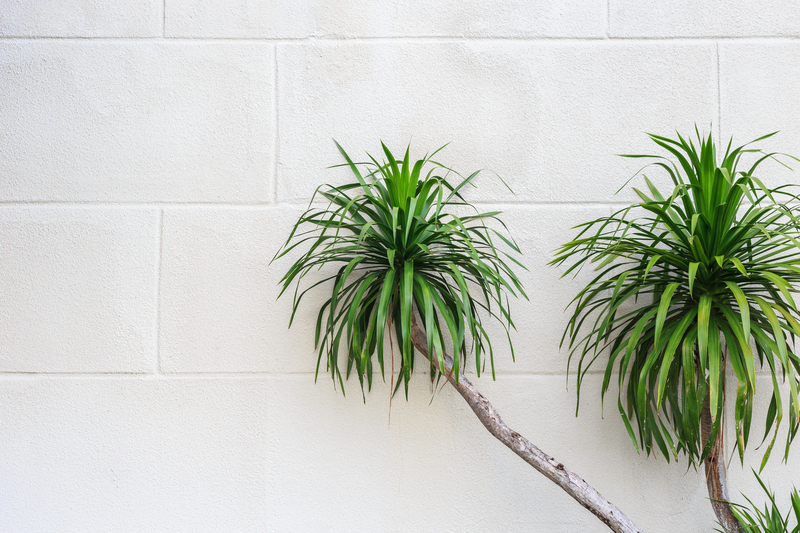The Frugal Gardener's Guide to Low Maintenance
Posted on 16/09/2025
The Frugal Gardener's Guide to Low Maintenance Gardens
Are you seeking ways to enjoy a beautiful garden with minimal effort and spending? Welcome to the frugal gardener's guide to low maintenance gardening. Whether you're just starting or looking to cut back on time and costs, this in-depth guide will help you cultivate an attractive, sustainable, and productive garden without overwhelming your wallet or schedule.

Why Choose a Low Maintenance Garden?
Low-maintenance gardening is not just a trend; it's a philosophy that embraces simplicity, resourcefulness, and efficiency. For frugal gardeners, it means:
- Saving money on materials, water, and supplies
- Reducing the time required for upkeep
- Creating a more sustainable and eco-friendly space
- Enjoying the beauty and bounty of a garden, without stress or constant maintenance
If these benefits sound appealing, read on to learn the essential strategies for low-maintenance, cost-effective gardening.
Planning Your Frugal, Easy-Care Garden
Planning is the foundation of every successful garden--especially for the budget-conscious gardener. Consider these core aspects during the design phase:
1. Assess Your Space and Microclimate
Before planting, analyze your garden's unique characteristics:
- How much sunlight does your area get?
- What is your soil type (clay, sandy, loamy)?
- How good is the drainage?
- Are there existing plants or trees to work around?
Tip: Working with your environment, rather than against it, is key to low-effort gardening.
2. Keep the Layout Simple
Simple, well-defined paths and beds reduce mowing, edging, and weeding. Choose shapes that are easy to navigate and maintain, like raised beds or mulched paths.
3. Select the Right Plants
Opt for plants that are:
- Native to your region, as they adapt better and need less water and care
- Drought-tolerant and resilient
- Perennials, so you don't have to replant each year
- Low-growing ground covers to displace weeds
A frugal, low maintenance garden flourishes with minimal intervention when you choose plants that naturally thrive in your setting.
Top Strategies for an Inexpensive and Low Maintenance Garden
Mulching: The Frugal Gardener's Secret Weapon
Mulch is one of the most economical tools for reducing your workload and costs. It suppresses weeds, locks in moisture, and improves soil quality. Here are budget-friendly mulch options:
- Grass clippings: Free and abundant
- Shredded leaves
- Wood chips (often free from local arborists)
- Compost, even homemade
- Straw or newspaper for larger areas
Composting for Cost Savings and Easy Care
Composting kitchen scraps, leaves, and yard waste returns valuable nutrients to your soil--cutting fertilizer costs. Build your own compost bin with pallets or use a simple pile method.
- Compost improves soil structure and moisture retention
- Reduces landfill waste
- Promotes healthy, resilient plants--which means less time and money spent on pest and disease control
Remember: Even a small compost bin offers big benefits with little effort.
Water Wisely: Frugal and Low-Effort Water Techniques
Watering can be one of the most time-consuming and costly aspects of gardening. Conserve water (and your time) with these methods:
- Install a rain barrel to collect free water
- Water early in the morning or late in the day to minimize evaporation
- Focus water at the base of plants to avoid waste
- Group plants by water needs for more efficient irrigation
- Use mulch to reduce watering frequency
Low Maintenance Plant Choices for the Frugal Gardener
Here's a list of easy-care plants that thrive with minimal attention in most temperate gardens:
- Lavender: Drought-tolerant and fragrant, deters pests
- Daylilies: Very tough, low water use
- Sedum (Stonecrop): Excellent for ground cover
- Hosta: Great for shade and very resilient
- Thyme or Creeping Jenny: Attractive ground covers
- Black-eyed Susan and Coreopsis: Low-maintenance perennials with bright flowers
- Herbs like Oregano, Sage, and Rosemary
Native shrubs and trees like Serviceberry or Dogwood often require very little care once established.
Cost-Saving Tips for Every Frugal Garden Enthusiast
1. Propagate Your Own Plants
- Start plants from seeds instead of buying seedlings
- Divide established perennials to expand your beds or share with friends
- Take cuttings from shrubs and herbs for new plants at no cost
Plant propagation is an essential skill for a resourceful, budget-conscious gardener.
2. Use Recycled and Upcycled Materials
- Build raised beds from old lumber or pallets
- Convert buckets and tubs as planters
- Seek out discarded bricks, stones, or fencing for free or cheap from neighborhood groups
3. Share and Swap with Fellow Gardeners
Join local gardening clubs or online community groups. Swapping seeds, plants, and even tools can save money and foster friendships.
4. Embrace No-Dig Gardening
The no-dig gardening method builds healthy soil by layering organic materials on top of existing ground. It suppresses weeds, retains moisture, and eliminates the back-breaking work (and costs) of tilling. Simply:
- Layer cardboard or newspaper to smother weeds
- Add compost, leaves, and mulch
- Plant directly into these nutrient-rich beds
This technique is perfect for the low maintenance, frugal gardener.
Essential Tools for the Low Maintenance, Frugal Garden
You don't need a shed full of fancy gadgets. A few quality tools, well cared-for, can last decades. Prioritize:
- Hand trowel
- Pruning shears
- Sturdy gloves
- A watering can or inexpensive hose (or collect rainwater!)
Buy second-hand when possible, or ask friends for tools they no longer use.
Manage Weeds the Economical, Low-Effort Way
Suppress with Mulch
Weeds are a frugal gardener's biggest enemy. However, thick mulch coverage can prevent most annual weeds from sprouting.
Plant Close Together
- Dense planting shades the ground and discourages weed growth.
- Try companion planting or multisowing for maximum space use.
Hand Weed Early and Often
Quickly pulling young weeds after rain takes less time than dealing with mature, established interlopers. A few minutes a week saves hours later.
Low Maintenance Gardens for Small Spaces or Containers
Don't have a traditional yard? Low effort, inexpensive gardening is ideal for patios, balconies, or even windowsills:
- Use large containers for vegetables, herbs, and flowers
- Self-watering planters reduce frequency of watering
- Grow drought-resistant succulents, hardy herbs, or salad greens
- Re-purpose buckets, crates, and old furniture as planters
Container gardens can be incredibly cost-effective and require little labor, making them perfect for apartment-dwellers or busy families.

Autumn and Winter: Off-Season Tasks & Savings
- Plant bulbs and hardy perennials that return year after year
- Top up mulch before winter to protect soil and reduce weeds next spring
- Collect leaves for compost or leaf mold
- Clean and store tools to extend their life
Thinking ahead in the off-season leads to even more manageable gardening in the busy months.
Final Thoughts: The Joy of the Low Maintenance, Frugal Garden
Low maintenance and frugal gardening is not about doing less for the sake of laziness, but about doing more with less--less money, less wasted effort, and less environmental impact. By planning intelligently, choosing the right plants, and using simple, effective techniques, you'll reap the rewards of a peaceful, pretty, and productive garden with minimal investment.
Remember:
- Start small if you're new to gardening
- Work with nature, not against it
- Share and learn with your local gardening community
Let your garden become a place of relaxation and beauty, not a source of chores and expenses. With these frugal, low maintenance gardening tips, you'll cultivate not just plants--but also peace of mind, financial savings, and a true sense of accomplishment.

